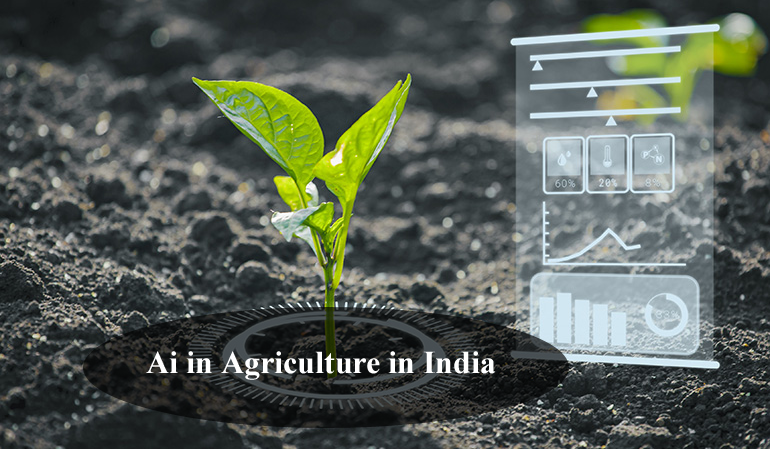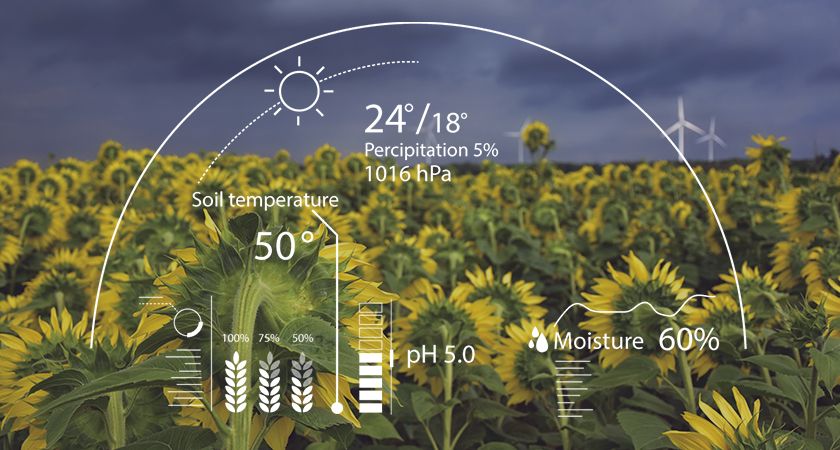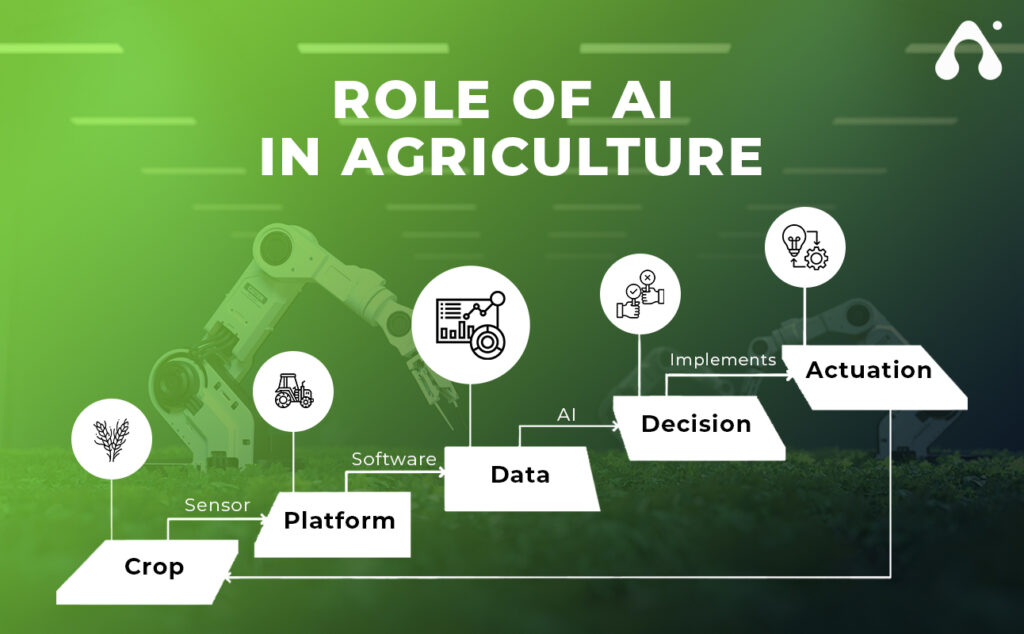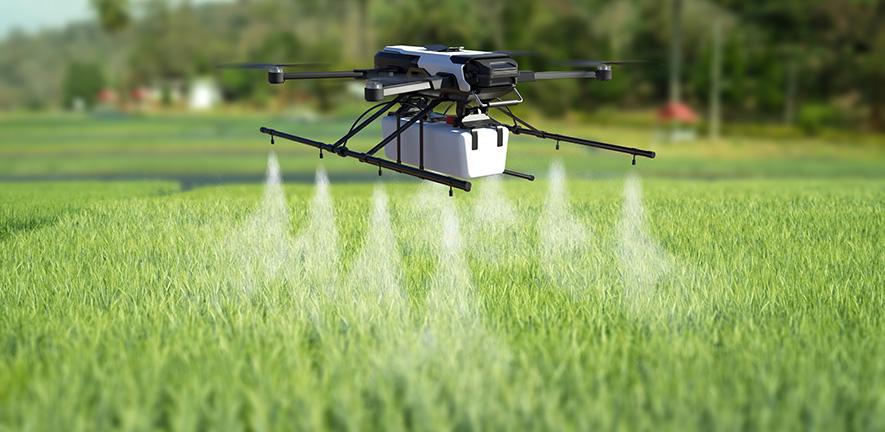Ai in Agriculture in India: India, with its vast agricultural landscape and millions of farmers, stands at the forefront of agricultural innovation. In recent years, the integration of artificial intelligence (AI) technologies into farming practices has emerged as a game-changer, promising to address challenges such as resource optimization, crop management, and yield enhancement. In this article, we’ll explore the transformative potential of AI in agriculture in India, examining its applications, benefits, and impact on the sector’s future.

Understanding AI in Agriculture
AI in agriculture involves the use of advanced algorithms and data analytics to analyze agricultural data and make informed decisions. By leveraging techniques such as machine learning, computer vision, and predictive analytics, AI systems can optimize farming processes, improve productivity, and mitigate risks associated with climate variability and market fluctuations.
Precision Farming: Optimizing Resource Allocation:
Precision farming, enabled by AI technologies, revolutionizes traditional farming practices by providing personalized and site-specific recommendations for optimal resource allocation. Through the analysis of data from sensors, satellites, and drones, AI algorithms can assess soil health, moisture levels, and nutrient requirements, allowing farmers to precisely target inputs such as water, fertilizers, and pesticides. This not only enhances crop yields but also minimizes resource wastage and environmental impact.
Crop Monitoring and Disease Detection:
One of the key challenges in agriculture is early detection and management of crop diseases and pests. AI-powered systems equipped with computer vision can analyze images captured by drones or smartphones to identify signs of diseases, nutrient deficiencies, and pest infestations. By detecting anomalies in plant health at an early stage, farmers can implement timely interventions, reducing crop losses and increasing overall resilience.
Weather Prediction and Climate Resilience:
Climate variability poses a significant threat to agricultural productivity, exacerbating challenges such as droughts, floods, and unpredictable weather patterns. AI-based weather prediction models leverage historical data, satellite imagery, and meteorological parameters to forecast weather conditions with greater accuracy. These forecasts enable farmers to make informed decisions regarding planting schedules, irrigation management, and crop selection, thereby enhancing resilience to climate-related risks.
Market Intelligence and Decision Support:
In addition to on-farm applications, AI technologies offer valuable insights into market trends and commodity prices, empowering farmers with timely information for marketing and sales decisions. AI-powered analytics platforms aggregate data from various sources, including commodity exchanges, government reports, and social media, to provide real-time market intelligence. This enables farmers to optimize pricing strategies, negotiate better deals, and access broader markets, ultimately improving profitability and livelihoods.
Also Read: What Is The Primary Advantage Of Using Generative AI In Content Creation In 2024 ?
Challenges and Opportunities:
While the potential of AI in agriculture is immense, its widespread adoption in India faces several challenges and opportunities.
- Access to Technology and Infrastructure: The adoption of AI technologies requires access to reliable internet connectivity, hardware infrastructure, and technical expertise, which may be limited in rural areas. Bridging the digital divide and providing training and support to farmers are essential for maximizing the benefits of AI in agriculture.
- Data Privacy and Security: The collection and analysis of agricultural data raise concerns regarding data privacy, ownership, and security. Establishing robust data governance frameworks and ensuring transparency in data sharing agreements are crucial for building trust and safeguarding farmers’ interests.
- Customization and Localization: AI solutions need to be tailored to the specific needs and contexts of Indian agriculture, considering factors such as crop diversity, regional variability, and socio-economic dynamics. Customizing algorithms and applications to suit local conditions enhances their relevance and effectiveness on the ground.
- Collaboration and Capacity Building: Promoting collaboration among stakeholders, including government agencies, research institutions, agribusinesses, and farmers’ organizations, is essential for driving innovation and knowledge exchange in AI-enabled agriculture. Capacity-building initiatives that focus on training farmers, extension workers, and rural entrepreneurs in AI technologies can facilitate their adoption and integration into farming systems.
Also Read: Mahindra XUV300 Facelift 2024 : Launch Date And Exciting Updates !
Conclusion:
AI has the potential to revolutionize agriculture in India, empowering farmers with actionable insights, optimizing resource management, and enhancing resilience to climate and market risks. By harnessing the transformative power of AI, India can unlock new opportunities for sustainable growth, food security, and rural development. However, realizing this potential requires concerted efforts from policymakers, industry stakeholders, and the farming community to overcome challenges and leverage AI as a catalyst for agricultural transformation. As India embarks on this journey towards a digital and data-driven agricultural future, the promise of AI offers hope for a more prosperous and resilient agrarian economy.
Latest Blog: Exploring the Transformative Power of Generative AI in Healthcare: A Bright Outlook for 2024



Fantastic site Lots of helpful information here I am sending it to some friends ans additionally sharing in delicious And of course thanks for your effort
Wow superb blog layout How long have you been blogging for you make blogging look easy The overall look of your site is magnificent as well as the content